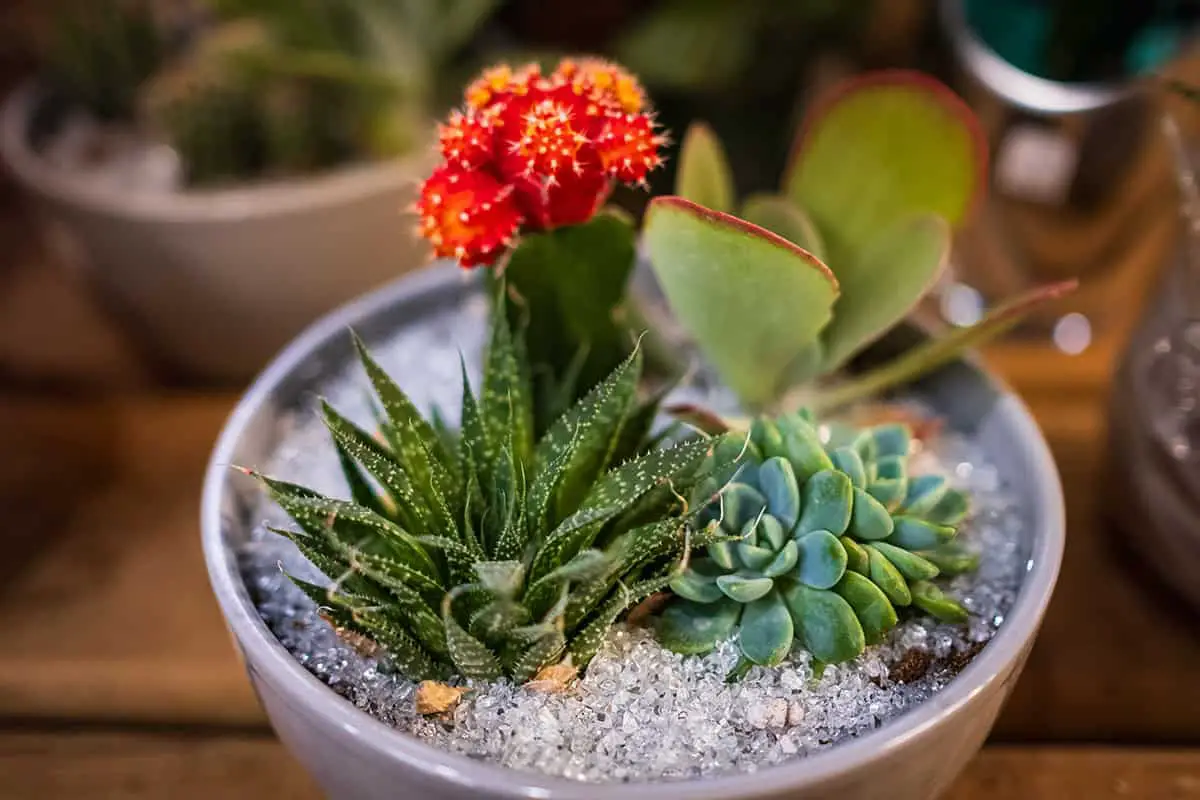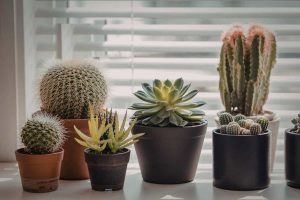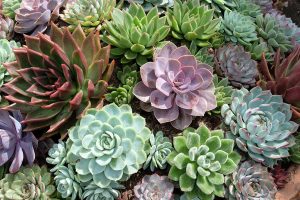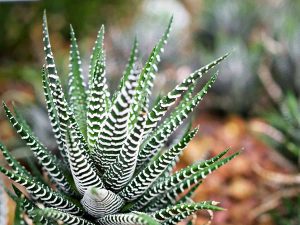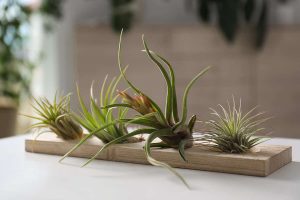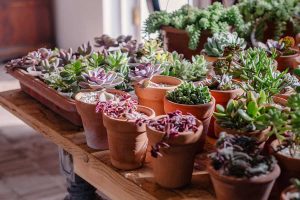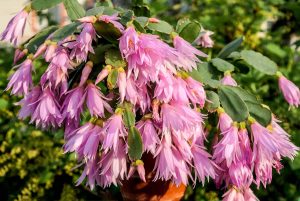You’ve just brought home a cute little cactus, thinking it would be the perfect low-maintenance plant for your busy lifestyle. But now you’re wondering how to keep it healthy and thriving. This article will provide you with essential tips on caring for indoor cacti, to ensure they stay vibrant and resilient.
Table of Contents
Light
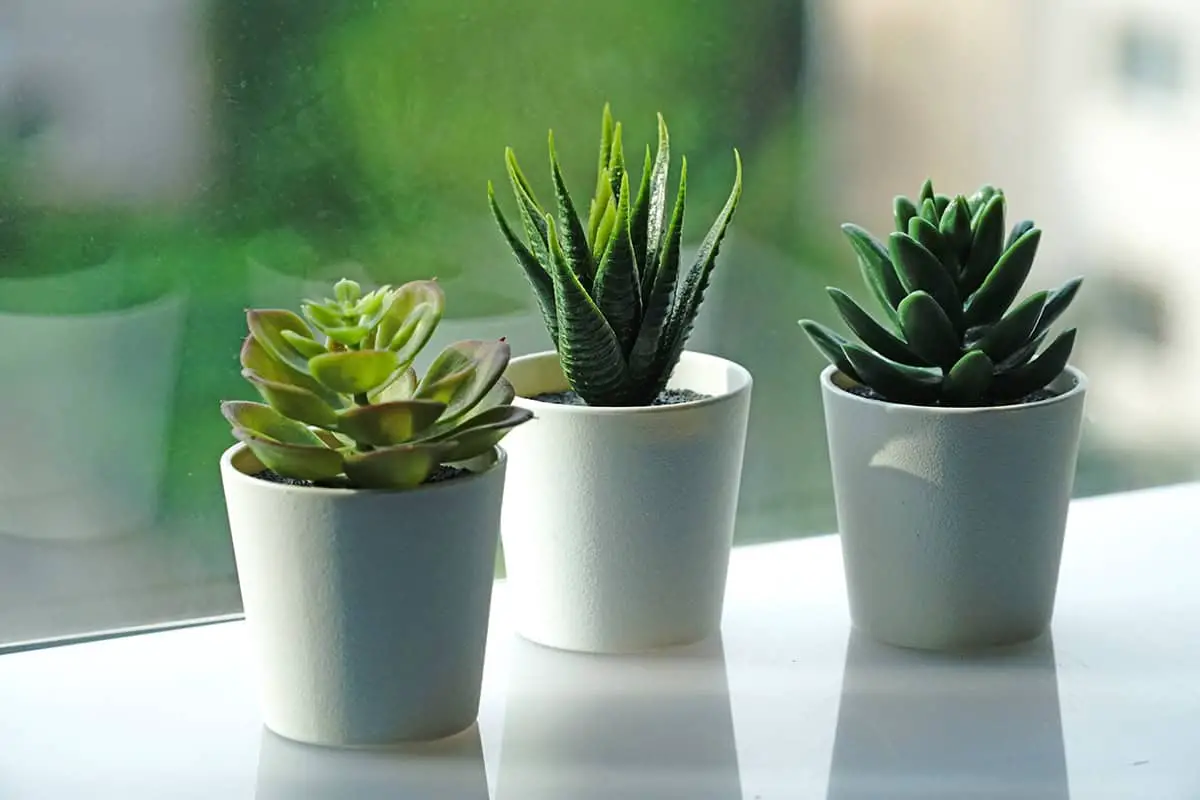
Indoor cacti need bright light to thrive. Place your cacti near a south or west-facing window. These windows provide the strongest light.
During the summer months, direct sunlight is essential. Some cacti may require protection from intense midday sun to prevent burns. Consider using a sheer curtain to filter the light.
Winter months present a challenge as daylight hours shorten. Move your cactus closer to the light source if necessary. You may need to supplement with a grow light to ensure your cactus receives at least 4 to 6 hours of light each day.
Fluorescent bulbs and LED grow lights are effective options. Position them about 6 to 12 inches above the plant. Ensure the light intensity mimics natural sunlight as closely as possible.
Rotate your cactus regularly to ensure even growth. Doing so allows all sides of the plant to receive adequate light.
For homes lacking sufficient natural light, consider cacti varieties known to be more adaptable to lower light conditions. Some types can tolerate less intense light better than others.
Soil
Your indoor cacti need well-draining soil. Most cacti naturally grow in sandy and porous soils. A mix of one part potting soil and one part coarse sand often works well indoors.
Ensure the soil is porous. Test it by moistening and squeezing it. If it crumbles when released, it’s suitable for cacti.
The potting mix should also be sterile to prevent diseases. Sterile potting soil reduces the risk of pests or pathogens affecting your plants.
For vertical cacti, the container diameter should be about half the height of the plant. For round cacti, the container should be about 2 inches wider than the plant. Keep the pot dry before transplanting to avoid root rot.
Holiday cacti, such as Christmas cacti, prefer slightly different soil. For them, avoid heavy, wet soils. Use a balanced fertilizer monthly from June through August.
Avoid overwatering your cacti. It’s critical to let the soil dry out between waterings. This prevents root rot and keeps your cacti healthy.
Watering
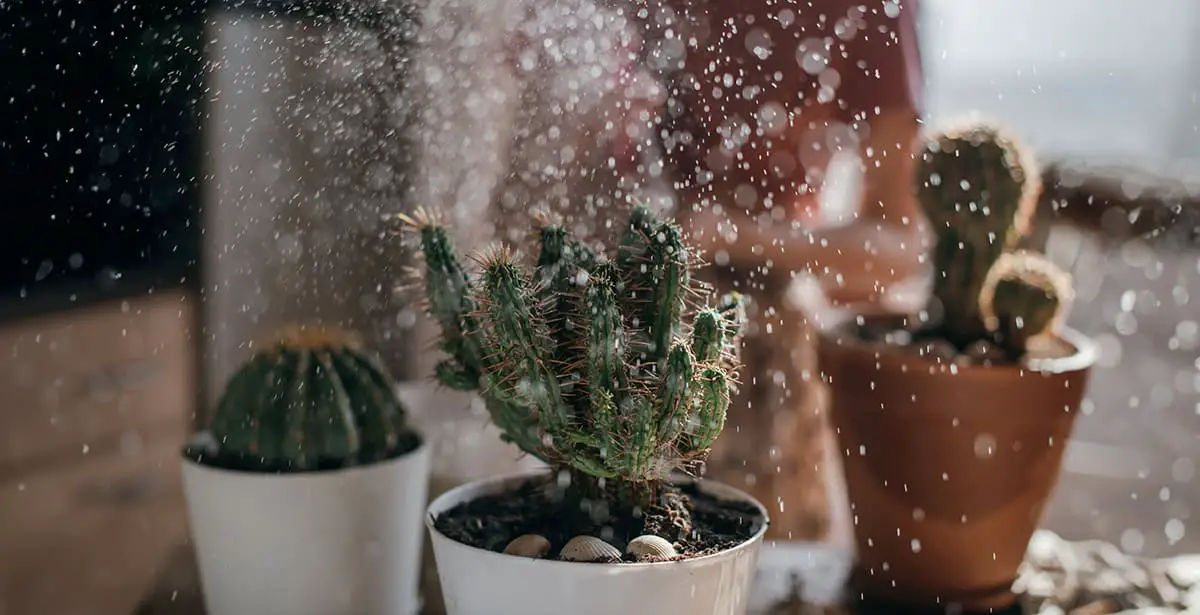
Watering indoor cacti correctly is crucial. Overwatering is a common mistake. This can damage the roots and cause rot. Make sure the soil is completely dry before you water.
Use your finger to test soil moisture. If it’s dry an inch below, it’s time to water. Always water thoroughly. Ensure the pot has a drainage hole so excess water can escape.
During summer, cacti usually need more water. In winter, you should reduce watering. Cacti enter a rest period during colder months, so they need less water.
Use room temperature water. Cold water can shock the plant. Always water at the base rather than from above. This helps to avoid wetting the plant’s body.
Too much water can cause significant problems. A wilting cactus, despite wet soil, is a sign of overwatering. In such cases, root rot might be an issue.
Temperature and Humidity
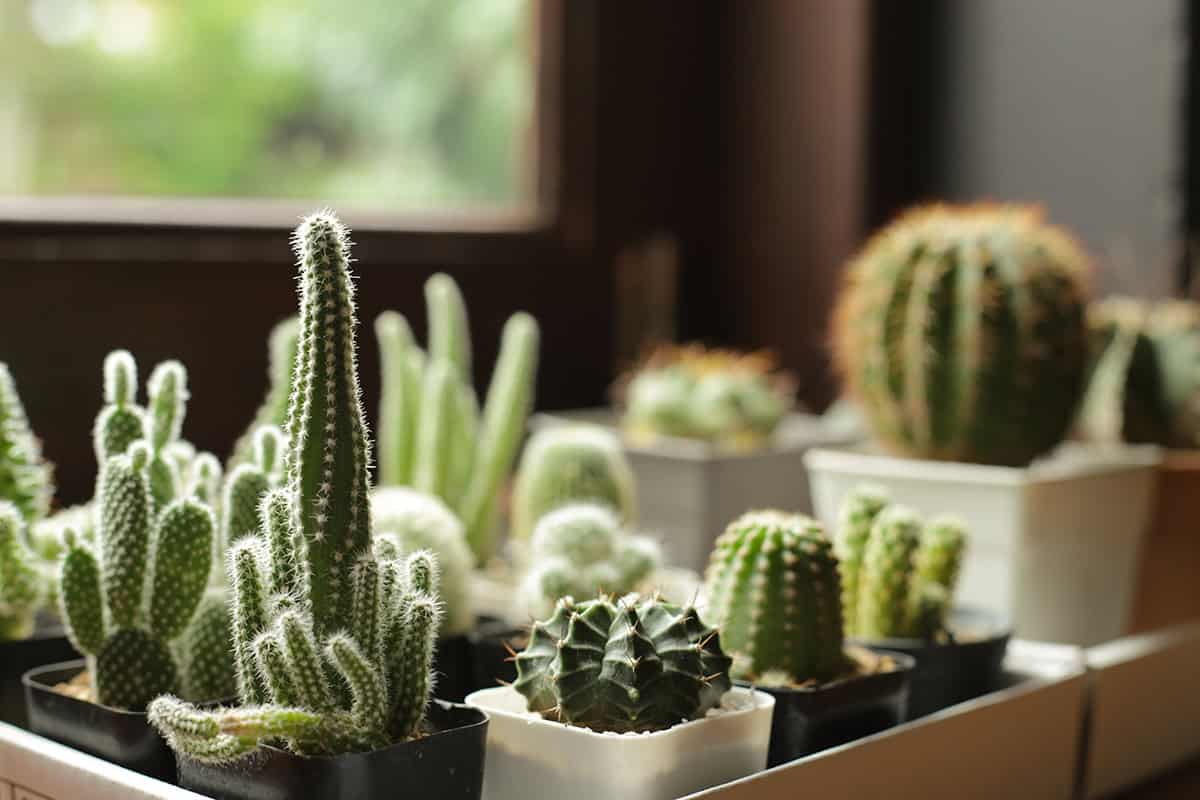
Indoor cacti need specific temperature and humidity conditions to thrive. During the daytime, maintain temperatures between 70°F and 80°F. At night, temperatures should drop to between 60°F and 68°F. This range supports optimal growth for most cacti.
Holiday cacti, in particular, have slightly different needs. They do best at daytime temperatures between 65°F and 70°F. Nighttime temperatures should be cooler, ideally between 55°F and 65°F. This ensures they flower properly and stay healthy.
Humidity plays a crucial role as well. Cacti generally prefer low humidity levels. High humidity can cause rot and other issues. Keep the air around your cacti dry. Good air circulation is also beneficial.
You might need to adjust the room conditions to meet these needs. Avoid placing cacti near drafts or sudden temperature changes. This can stress the plants and cause problems like bud drop.
Fertilizer
Fertilizing your indoor cacti correctly is important for healthy growth. Cacti need less frequent fertilization than other plants.
Use a balanced fertilizer, such as a 20-20-20 formula. This means it has equal parts nitrogen, phosphorus, and potassium.
Apply the fertilizer during the growing season, from spring through early fall. This is when your cacti actively grow.
Use a diluted solution to avoid burning the roots. Mix the fertilizer at half the recommended strength.
Feed your cacti every two weeks during the growing season. This keeps them healthy and encourages strong growth.
During the fall and winter, reduce or stop fertilizing. Cacti enter a dormant phase and need fewer nutrients.
Pay attention to any signs of stress, and adjust your fertilizing schedule as needed.
Propagation
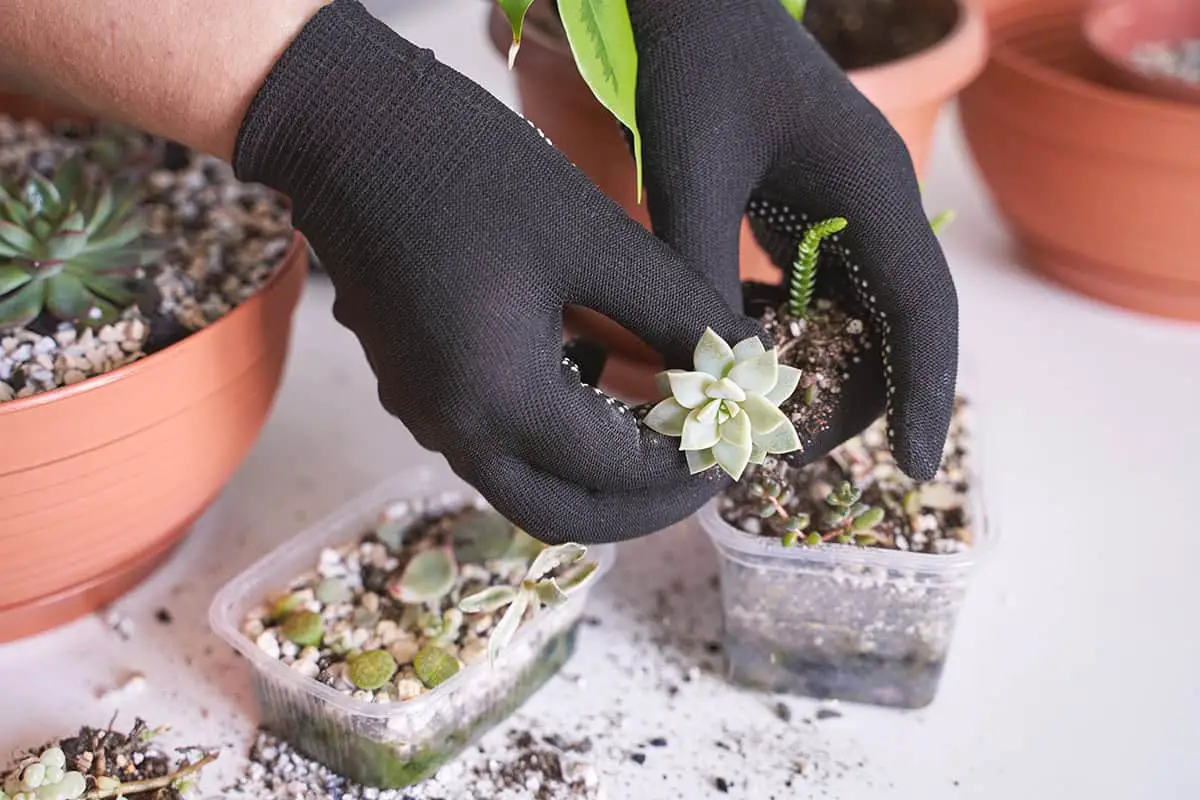
To propagate indoor cacti, start with a healthy plant. Use clean, sharp pruners to cut a section of stem 3 to 6 inches long. Allow this cutting to dry for a few days. This step helps the cut end callus over.
Once the cutting has dried, dip the base in the rooting hormone. Place the cutting into well-draining soil. Keep the soil lightly moist. Avoid overwatering.
Roots will begin to form in a few weeks. Gently tug the cutting to check for resistance. When the roots hold, it is time to repot the cactus.
Use a new container slightly larger than the cutting’s root ball. A mix of one part potting soil and one part coarse sand is ideal for repotting. This soil mix should be porous and sterile.
Place the newly potted cactus in a bright, warm location. Ensure it gets indirect sunlight. Water sparingly until the plant establishes itself.
Some cacti, like Christmas cacti, are best propagated from segment cuttings. Break off a section at a joint, let it dry, then plant it in a new pot with the same soil mix.
Keep the soil lightly moist and the cutting should root in a few weeks. For succulents, the propagation method is similar. Remove leaves from the lower half of the stem and allow them to dry before planting.
Pruning
Pruning indoor cacti is essential for their health and appearance. You should remove dead or damaged parts of the cactus. This helps the plant focus its energy on new growth.
Use clean, sharp tools for pruning. Dirty tools can introduce diseases to your cactus. Sterilize the tools with rubbing alcohol before use.
Cut just above a healthy node or segment. Avoid removing too much at once; this can stress the plant. Simply trim the necessary parts.
Regularly check your cactus for signs of disease. Look for discoloration or soft spots. Remove any affected areas promptly.
Some cacti self-prune. For example, holiday cacti naturally shed unneeded segments. Still, inspect them regularly to assist as needed.
Cacti can drop segments due to stress. Ensure proper light, temperature, and water levels to reduce stress.
Use pruning as an opportunity to propagate. Place cut segments in a dry area for a few days. Then plant them in fresh, well-draining soil. This is a great way to grow new plants from your pruned sections.
Potting and Repotting
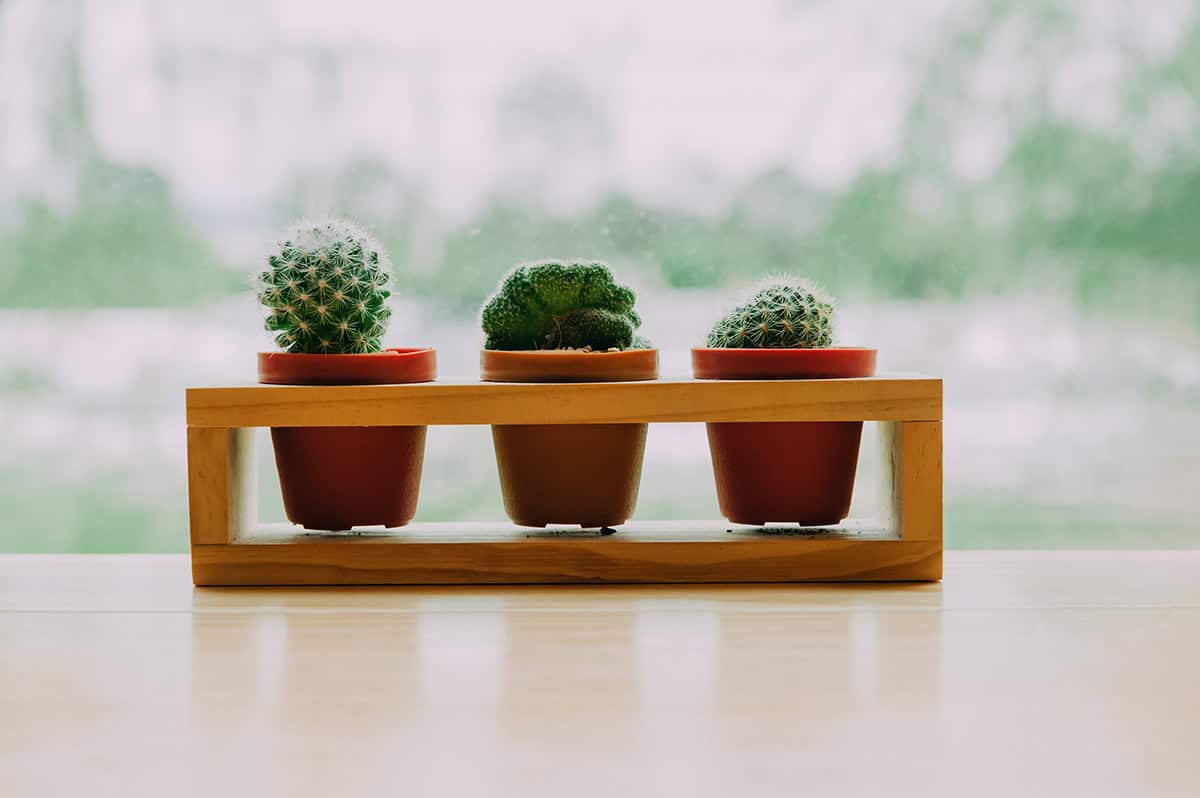
When potting indoor cacti, choose a pot with a drainage hole. This prevents water from accumulating at the bottom and causing root rot. Place a shard over the drainage hole to stop soil from leaking out.
Add enough new potting mix to the bottom of the pot to ensure the root ball sits one to two inches below the rim. This space allows for efficient watering without overflow.
Indoor cacti thrive best when they are slightly pot-bound. Repot your cacti only when necessary. Spring, particularly April, is the ideal time for repotting, coinciding with the beginning of their growth season. Use a container just slightly larger than the original pot to avoid excess soil retaining too much moisture.
When handling cacti during repotting, wear heavy leather gloves or wrap the cactus in several layers of newspaper. This protects your hands from getting injured by the spines.
For the potting mix, combine equal parts potting soil and coarse sand. This mixture ensures good drainage, mimicking the well-drained sandy soil that cacti prefer in nature. Squeeze the moistened mix in your hand; it should fall apart when released, indicating adequate porosity.
Ensure both the pot and growing medium are sterile. This prevents introducing pests and diseases to your cactus.
Poor Light
Insufficient light results in elongated, weak growth, also known as etiolation. Place your cactus in a bright spot. It should get direct sunlight for several hours each day. If your cactus doesn’t receive enough natural light, use a grow light.
Temperature Stress
Cacti thrive in stable temperatures. Sudden temperature changes can cause stress, leading to dropping buds or flowers. Keep indoor temperatures between 60-70°F. Also, avoid placing your cactus near drafts or heating vents.
Nutrient Deficiency
Nutrient deficiencies can impact cactus health. Use a balanced fertilizer (20-20-20) during the growing season. Reduce nitrogen in the fall. This helps maintain vibrant, healthy growth. Never over-fertilize, as it could harm your plant.
Potting Issues
Cacti grow best when slightly pot-bound. Only repot when the plant outgrows its container. Use a well-drained potting mix. Consider repotting every three years or when roots appear crowded.
Blossom Drop
Blossom drop occurs if a cactus experiences stress. Stress factors include drafts, sudden temperature changes, or overwatering. To prevent this, make sure the cactus is in a stable environment.
